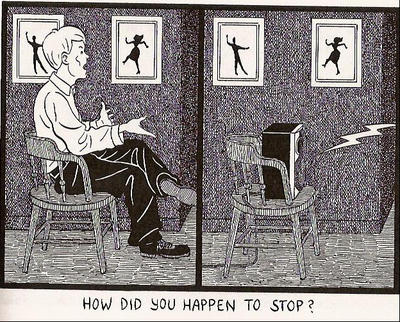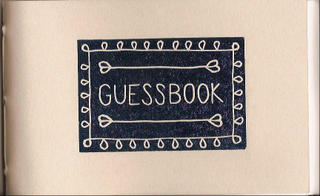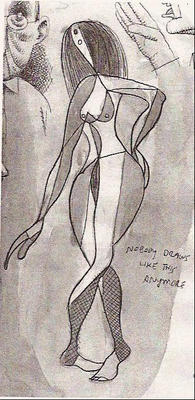I’ve been struggling a bit with this post on John Hankiewicz’ work; I’ve read Dance three times and puzzled over exactly what it means to me. I pick it up and it feels reassuring. Inside, I’m not reassured so much as thrilled. But when I try to put my feelings into words, I’m almost lost. Dance has a simple, creamy cover of thick paper that’s bound together by string. On the front is a panel from the mini-comic and the title Dance positioned vertically in reddish letters.

But inside there’s nothing simple. After a brief dance of two lovers discussing a rift in their relationship as they traverse the dance floor, Hankiewicz unleashes an arsenal of pages that flow together seamlessly, while leaving the reader almost struggling to keep up with him. He calls this section “Amateur Comics,” but it feels like he knows what he’s doing with each panel. “Amateur Comics” is a narrative tied together with a series of questions, often repeated, that are accompanied by images of a lone male character reacting to his environment. The environment changes with each new question and the character must adapt to the change from the question asked. There’s a formality to this section, partly because of the starkness of the illustrations, but also because of the pattern that exists. As a reader you travel from room to room with the character, but in the end you’re left by yourself as only his shoes remain. On the last panel, there’s a note on a bench. I want to know what that note says.

The rest of Dance consists of a short sketchbook section of figures from the waist down as they dance and an experimental story called “The Kimball House.” Dance is a 100 page mini-comic, square bound with string and it’s available from John’s website for $9.
Guessbook is an 88-page sketchbook by John and it’s also bound together with string. This is a time-consuming process, and much more difficult than simply stapling some pages together (my preferred method, because I lack the patience for hand stitching a mini-comic).

In Guessbook, John switches gears, playing around with caricatures, figure studies, gags, and still life drawings. Like the Martin Cendreda sketchbook, it’s interesting to see an artist stretch their legs a bit and play with the form that they adhere to in their usual work. Hankiewicz’ figures and backgrounds are very regimented in his normal work, but here he draws with a much looser hand. It’s fun watching him take a character and deconstruct the familiar. Sometimes you’re left with a cubist sketch as in this drawing where John notes, “Nobody draws like this anymore.”

I urge you to check out John’s website and his comics. His is a unique vision and I haven’t even talked about Tepid and Martha/Gregory yet.






1 comment:
Now those are some comics I can dig!
-Jon
Post a Comment